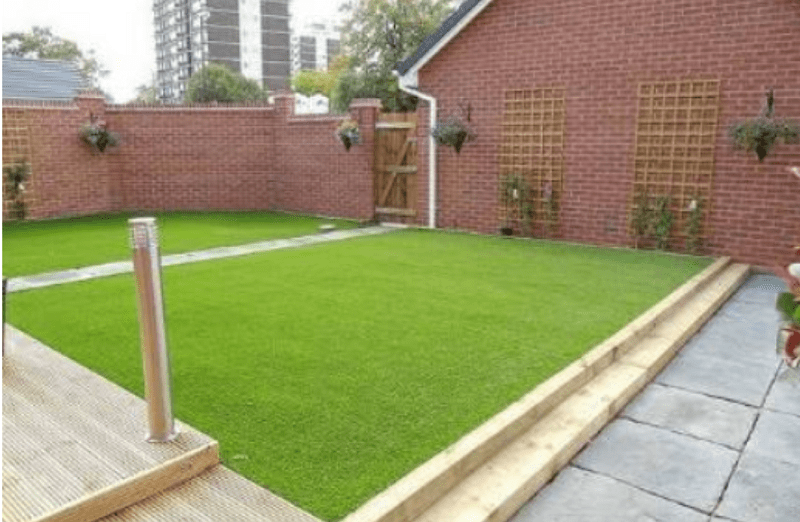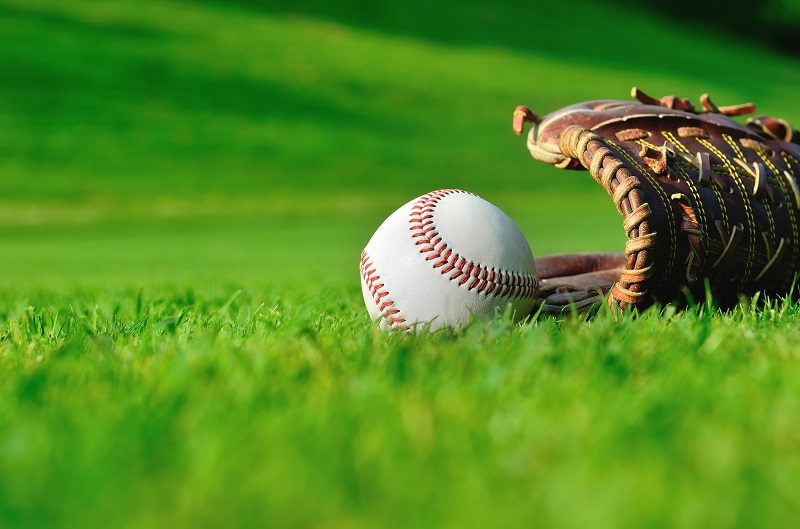When people talk about the history of artificial grass, the first thing that comes to mind is the Houston Astrodome and Astroturf. Yet, many people are surprised to learn that this is not where the history of fake grass begins. Rather, this revolutionary product was the result of a collaborative effort between several businesses that began in the 1950s.
The 1950s
The trigger that paved the way for the creation of artificial turf started with The Ford Foundation. The Foundation was conducting research on how to get young people more involved in physical fitness in the major cities across the country.
In the late 1950s, Chemstrand, part of Monsanto Industries, was working on a new synthetic carpet fiber. This new carpeting was being developed because of a partnership with The Ford Foundation and for creating ideal play surfaces at schools in major cities.
1960-1965
It wasn’t until the early 1960s that progress was made on the new synthetic carpet fibers. Chemstrand’s Creative Products Group was task with the creation of new play surfaces for schools, which they named “Chemgrass.”
After some initial testing of the new nylon-based Chemgrass to determine how it would stand up to exposure to the elements, fire, and general “wear and tear,” they were ready to start testing it at schools. In 1964, Chemstrand got permission from Moses Brown School in Providence, RI to be the first school to try out Chemgrass.
Other schools quickly wanted to try out the fake grass at their schools, as it was the perfect solution where it was difficult to grow grass and maintain it.
The Houston Astrodome
As news of Chemgrass spread, one person took notice: Judge Roy Hofheinz. Judge Hofheinz built the Houston Astrodome, an enclosed stadium for the Houston Astros and the Houston Oilers.
Initially, the stadium had transparent panels installed at the top of the stadium to allow sunlight in so the grass used in the field would grow. Yet, the panels made it hard for the baseball players to see the ball in the air. So, the panels were painted, and the grass quickly died.
Without any grass, the ground was painted green, but this didn’t last long. Judge Hofheinz wanted a solution, and Chemgrass was the answer. Working with Monsanto Industries, Chemgrass was installed at the Astrodome.
Part of the agreement with Monsanto was that the new artificial grass would be renamed “Astroturf” since the Astrodome was the first major sporting arena to install Chemgrass.
1966-1969
In 1966, on the opening day of baseball at the Astros began the season on the newly installed Astroturf. That fall, the Oilers took to the field and were the first NFL team to play on artificial turf.
A year later, in 1967, Indiana State University installed Astroturf at its outdoor stadium. The school became the first outdoor stadium to use the fake turf grass. That same year, Monsanto patented the name Astroturf.
It wasn’t too long before other major stadiums wanted to install Astroturf. It offered many benefits—namely low maintenance costs.
The 1970s-1980s
The 1970s saw the continued spread of Astroturf in stadiums of all sizes. Public and private schools, colleges, universities, and community arenas were all switching to the revolutionary turf grass.
The 1970s were also a time of change for artificial grass as it entered its second generation. New chemicals were being developed—namely polypropylene. This plastic-based chemical was thought to make a perfect synthetic material for artificial turf.
Through much trial and error, eventually there was success. The new turf looked a bit more real than Astroturf. The blades of grass were able to be spaced a bit further apart, which allowed the second generation of fake turf grass to mimic the movements of natural blades of grass.
Polypropylene artificial turf also used sand as its infill. As such, the artificial turf offered better traction and footing required in sports. Another benefit of this generation of fake turf was it could be made in different colors and not just green!
Besides baseball and football, other sports started to install artificial turf at various indoor and outdoor stadiums, including tennis, field hockey, and lacrosse.
In the late 1970s and the 1980s, the first residential use of artificial grass began. People who lived in areas where it was difficult to grow grass, due to heat and watering restrictions, swapped out their natural lawns for artificial grass rolls.
Not only did they have an essentially maintenance-free yard but also one that would remain green year-round even though the grass still looked fake.
The 1990s

Just like the 1970s, the 1990s were a time of change for artificial turf that moved it into its third generation. In the early 1990s, another plastic-based chemical that had been discovered in the 1930s was being tested. It was called polyethylene. It was thought this new material would be the perfect replacement for polypropylene.
Another change that occurred in the 1990s was the development of a new plant-based yarn made from dead natural grass fibers. Through experimentation, it was discovered artificial grass blades could be made longer. Polyethylene could also be spun much like yarn and then sewn to the backing using the plant-based yarn.
As a result, the fake grass not only looked almost real but also felt more natural. As a bonus, polyethylene is UV-resistant, so it doesn’t fade.
In the mid-1990s, granular rubber was created. This material could be used as the infill in place of sand. By using granular rubber, the turf grass was even softer. Additionally, it was easy to make granular rubber by recycling old tires and other rubber materials, making artificial turf even more eco-friendly.
The 2000s and Beyond
With the advances in the 1990s, people gained a new appreciation of artificial turf’s many uses. The fake turf is well-suited for use for any sport, including soccer and golf greens. It also allows installation in public parks, public sports fields, and more.
Further advances in artificial grass allowed unique types to be made. Some turf is well-suited for use in water parks. Another type is designed just for pets.
Residential Use of Artificial Grass Increases
One change in the industry that started to occur in the 2000s, and which is still occurring, is the installation of artificial lawns for residential use. People who are environmentally conscious can get a lush, green lawn without the added costs of maintaining natural grass.
Additionally, homeowners do not have to worry about using gas, oil, fertilizers, and other such things that can be harmful to the environment. Furthermore, they can reduce their water usage since they no longer must water their lawns to keep them green in the hot summer months.
Best of all, homes with fake grass turf remain green in the fall and winter too. Imagine being the only home in your subdivision with a lush, green lawn in the middle of winter!
Commercial Use of Artificial Grass Increases

Another change that has occurred in the 2000s and beyond is the commercial use of fake turf. It is no longer only being installed for landscaping and sporting purposes. Commercial businesses are using artificial grass rolls to create “green spaces” inside office buildings. They can install it on outdoor patios, rooftops, and other such locations.
With advances in artificial grass over the decades, it now looks and feels like natural grass. Many people find it difficult to tell the difference when looking at a natural lawn and an artificial lawn. Along with the eco-friendly and long-term maintenance savings of installing fake turf grass, more and more people and businesses are making the switch.
For further information about the different types of artificial grass for your home or business, please feel free to explore our wholesale turf grass products online or contact Artificial Grass Wholesalers at 877-262-4145 today!


